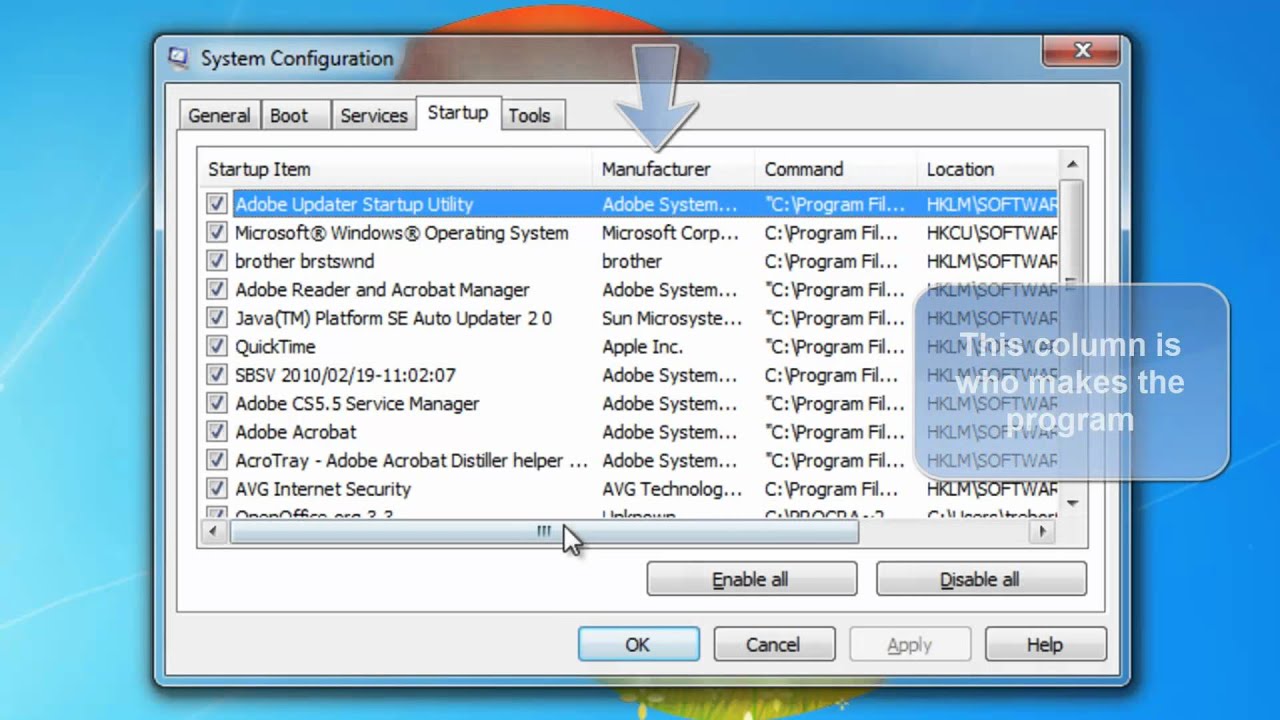
In the realm of Windows 7, maintaining optimal system performance and managing startup processes are paramount tasks for users seeking efficiency and productivity. Enter the System Configuration Utility, affectionately known as msconfig, a powerful tool designed to empower users with control over various system configurations. In this exhaustive guide, we will embark on a journey to demystify msconfig, unraveling its myriad features and functionalities to unleash its full potential.
Understanding the System Configuration Utility (msconfig):
Before delving into the intricacies of msconfig, it’s essential to grasp its fundamental purpose and significance:
- Definition: The System Configuration Utility, or msconfig, is a built-in tool in Windows 7 that enables users to manage startup processes, services, and boot options. It provides a centralized interface for configuring various aspects of system behavior, enhancing performance, and troubleshooting issues.
- Startup Management: One of the primary functions of msconfig is to manage startup programs and services. By selectively enabling or disabling startup items, users can streamline the boot process, reduce startup time, and improve system responsiveness.
- Diagnostic Tool: Msconfig serves as a diagnostic tool for troubleshooting system startup issues and conflicts. Users can use it to perform selective startup configurations, isolating problematic elements and diagnosing the root cause of system instability.
Using the System Configuration Utility (msconfig):
Now, let’s delve into the step-by-step process of using msconfig to manage system configurations in Windows 7:
- Accessing msconfig:
- Click on the Start button in the taskbar.
- Type “msconfig” in the search box and press Enter.
- Alternatively, press the Windows key + R to open the Run dialog, type “msconfig,” and press Enter.
- Navigating msconfig Tabs:
- Msconfig consists of several tabs, each offering different configuration options. The main tabs include:
- General: Provides options for configuring system startup behavior, including boot options and startup selections.
- Boot: Allows users to modify boot settings, such as boot parameters and boot configuration data (BCD).
- Services: Displays a list of system services and allows users to enable or disable services.
- Startup: Lists programs that run at system startup and enables users to manage startup items.
- Msconfig consists of several tabs, each offering different configuration options. The main tabs include:
- Configuring System Startup:
- In the General tab, users can configure various startup options, including:
- Normal Startup: Loads all device drivers and startup services.
- Selective Startup: Allows users to selectively enable or disable startup items and services.
- Diagnostic Startup: Loads basic devices and services only, useful for troubleshooting startup issues.
- In the General tab, users can configure various startup options, including:
- Managing Startup Programs:
- In the Startup tab, users can view and manage programs that launch at system startup. To manage startup programs:
- Uncheck the boxes next to unnecessary startup items to disable them.
- Click on the “Disable all” button to disable all startup programs at once.
- Use the “Enable all” button to re-enable all startup programs.
- In the Startup tab, users can view and manage programs that launch at system startup. To manage startup programs:
- Modifying Boot Options:
- In the Boot tab, users can modify advanced boot options, such as boot parameters and boot configuration data (BCD). This tab is particularly useful for troubleshooting boot-related issues and configuring advanced startup options.
- Enabling/Disabling Services:
- In the Services tab, users can view a list of system services and their status (running or stopped). To enable or disable services:
- Check or uncheck the boxes next to services to enable or disable them, respectively.
- Use caution when modifying services, as disabling essential services can affect system stability and functionality.
- In the Services tab, users can view a list of system services and their status (running or stopped). To enable or disable services:
Advanced Features and Tips:
Msconfig offers several advanced features and tips to enhance system configuration and troubleshooting:
- Diagnostic Startup: Use the Diagnostic Startup option in the General tab to perform a minimal startup configuration, useful for diagnosing startup-related issues.
- Boot Logging: Enable Boot Logging in the Boot tab to create a log file (ntbtlog.txt) that records all drivers and services loaded during startup, aiding in troubleshooting.
- System Restore: Msconfig allows users to launch System Restore directly from the Tools tab, facilitating system recovery in the event of critical system changes or errors.
- Selective Startup: Experiment with Selective Startup configurations to identify and isolate problematic startup items or services, helping to troubleshoot system instability and performance issues.
Conclusion:
The System Configuration Utility (msconfig) in Windows 7 is a versatile and powerful tool for managing system configurations, optimizing startup processes, and troubleshooting issues. By following the comprehensive guide outlined above, users can harness the full potential of msconfig to enhance system performance, streamline startup behavior, and diagnose system-related problems effectively. Whether it’s managing startup programs, configuring boot options, or troubleshooting system instability, msconfig empowers users with the tools and insights needed to maintain a smooth and efficient computing experience. So dive into msconfig, explore its features, and unlock new possibilities for fine-tuning and optimizing your Windows 7 system configuration.